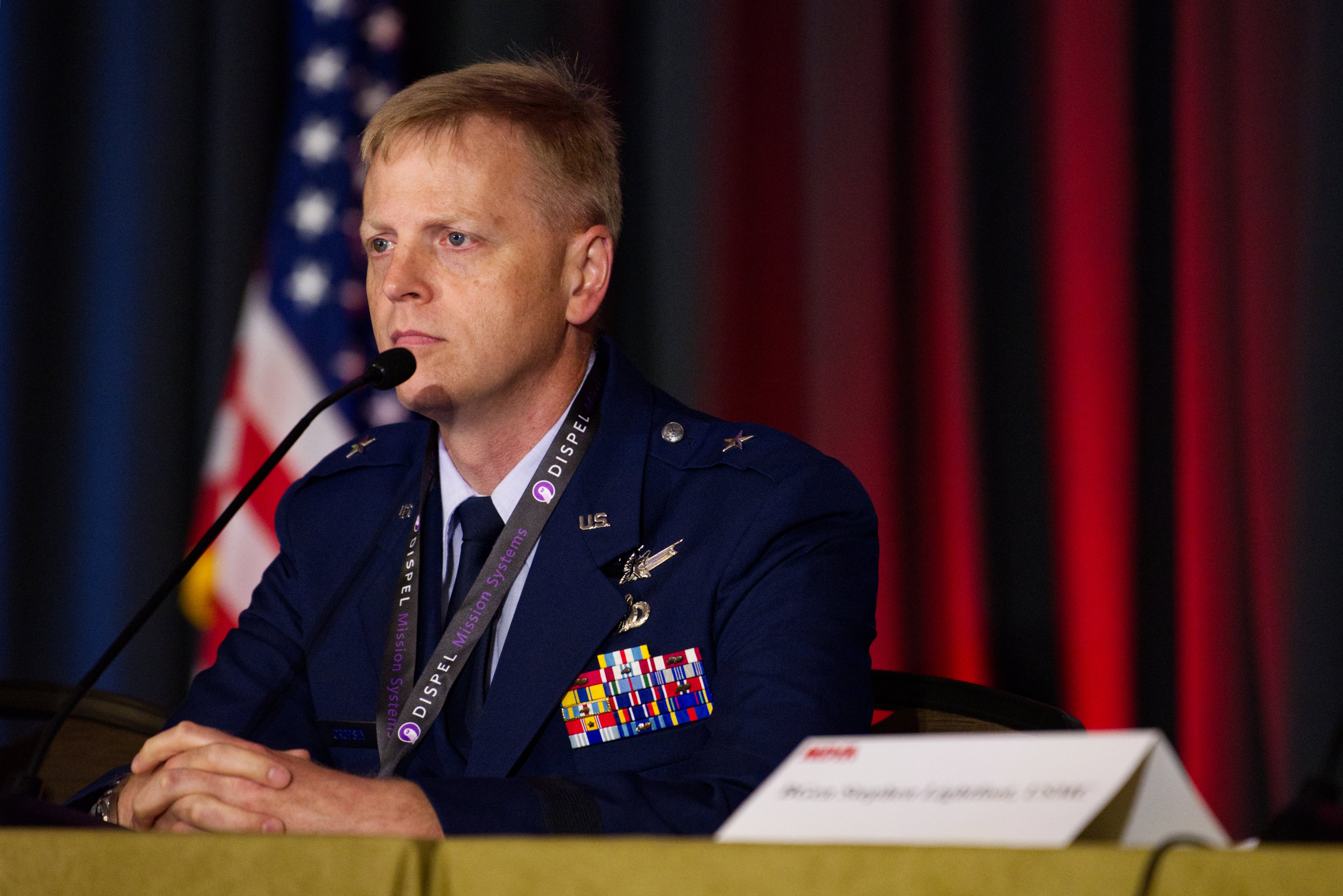NATIONAL HARBOR, Md. — As the U.S. Air Force develops its next generation of command and control, it is using two measures of success: how quickly forces can be tasked and coordinated in a fight; and how tolerant digital systems are of new technologies and applications.
To ensure the U.S. military outwits, outmaneuvers and outshoots a powerful adversary such as China or Russia, the Pentagon has pursued a strategy known as Combined Joint All-Domain Command and Control, linking sensor to shooter from the cyber realm to space. The Advanced Battle Management System, or ABMS, is the Air Force’s contribution to the multibillion-dollar endeavor.
“There’s two different, fundamental rails that we’re looking at,” Brig. Gen. Luke Cropsey, the integrating program executive officer for command, control, communications and battle management, told reporters Sept. 11 on the sidelines of the Air, Space and Cyber Conference at National Harbor in Maryland.
“There’s the combat-effectiveness set of metrics that we’d go look at, with regards to how well we’re actually employing combat capability,” he said. “But then there’s also the backend side of that.”
Cropsey was tapped last year by Air Force Secretary Frank Kendall to oversee a sprawl of connectivity campaigns and represent the service when working with the Office of the Secretary of Defense — a role he described as one of the most difficult he has assigned someone “by a wide margin.” The Pentagon’s fiscal 2024 budget blueprint allocated $1.4 billion for CJADC2.

Key to benchmarking and maturing the Air Force’s future communication abilities is the Shadow Operations Center-Nellis, or ShOC-N, at Nellis Air Force Base, Nevada. There, experts can tinker with emerging tech and “assess industry bringing in battle-management applications, et cetera,” said Brig. Gen. Daniel Clayton, the director of the ABMS Cross-Functional Team.
“In our model, we have 13 discrete functions that we have identified that battle managers have to perform,” he said at the conference. “Can your application do all 13 of those? Yes or no.”
Other opportunities for testing exist in military exercises such as the Army’s Project Convergence. Last year’s iteration featured maritime- and land-centric scenarios colored by threats seen in the Indo-Pacific and Europe.
Additional metrics are being kicked around and could be rolled out in the future, according to Cropsey.
“There are, actually, myriad different opportunities that are out there for us to go plug things into and actually experiment and prototype to figure out, ‘OK, where are we moving the needle? Where do we need to go back and make more adjustments?’” he said.
Colin Demarest was a reporter at C4ISRNET, where he covered military networks, cyber and IT. Colin had previously covered the Department of Energy and its National Nuclear Security Administration — namely Cold War cleanup and nuclear weapons development — for a daily newspaper in South Carolina. Colin is also an award-winning photographer.




